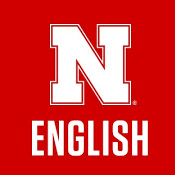English, Department of

Department of English: Faculty Publications
Document Type
Article
Date of this Version
2008
Citation
Chapter 23 in The Oxford Handbook of Early American Literature, edited by Kevin J. Hayes. New York: Oxford University Press, 2008, pages 527–546
Abstract
Charlotte Temple and Mr. Anderson do not appear together in most accounts of the history of the American novel. For most of the twentieth century, such histories began in 1789, with the publication of William Hill Brown’s tale of seduction, The Power of Sympathy, which, as Alexander Cowie describes it, is “a comparatively long fictional work laid in Boston, Boston, written by an American, and grounded in purely local interests” (Cowie 1948, 10). Analyses of the American novel covering the 1790s most often focus on Hugh Henry Brackenridge’s satiric picaresque of early national politics, Modern Chivalry (sporadic installments beginning in 1792); Hannah Webster Foster’s fact-based seduction novel, The Coquette (1798); the early novels of Charles Brockden Brown, whose career as a novelist began in 1798; and Charlotte, with foreign-born Charlotte taking the place of “an adopted child in a family of biological siblings” all born in America (Stern 1997, 34). Literary history has also, however, often characterized these early novels and others published during the same years as botched or confused. Critics attribute the failure of the early nation to produce novels worth reading and valuing to many factors, such as the moral and religious censure of novel reading, the dispersal of the population across a broad geographic area, the absence of some cohesive American identity capable of expression in literature, and a continuing colonial dependence in cultural matters even after the Revolution (Loshe 1907; Cowie 1948; Fiedler 1960).
Critical judgments shifted in the late twentieth century. Instead of explaining why these stories of seduction, incest, picaresque wandering, and gothic intrigue are pale, belated imitations of British antecedents, critics have analyzed these novels in light of the pressing political questions facing the new nation in the wake of the enactment of the U.S. Constitution in 1789 (Davidson 1986; Stern 1997; Barnes 1997). Other critics have reassessed the chronological and geographic boundaries of the American novel, looking at novels produced as early as the late seventeenth century and representing life in North America, South America, and the West Indies. This chapter strikes a geographic and chronological middle course, focusing on novels published from the 1750s into the 1790s that represent life in the British colonies that became the United States of America, even though most of these novels were first London, not the colonies or the United States. Indeed, this chapter argues that the American novel as traditionally defined (set in America, treating American subject matter, written by an American person) necessarily had its beginning from within a transatlantic context. These early novels feature significant American content involving major characters, but they were also written by authors who resided for some period in what would eventually become the eastern United States—or were written by persons who represented themselves in print as having resided there. In addition to Mr. Anderson and Charlotte, this chapter considers Charlotte Lennox’s The Life and Adventures of Harriot Stuart, Written by Herself (1750); Emmera, or. The Fair American (published anonymously in 1767, but by Arthur Young); The Female American (also published anonymously in 1767, represented as the edited papers of Unca Eliza Winkfield, a seventeenth-century American woman); and two other Rowson novels of the 1790s.


Comments
Copyright © 2008, Oxford University Press. Used by permission